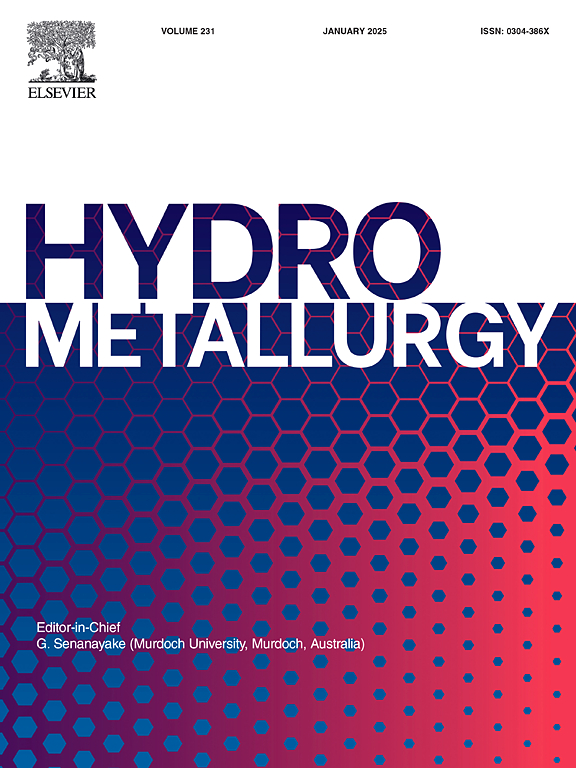Hydrometallurgical process of spent lithium-ion battery recycling Part. 1 Chemical leaching of valuable metals from cathode active materials: Review and case study
IF 4.8
2区 材料科学
Q1 METALLURGY & METALLURGICAL ENGINEERING
引用次数: 0
Abstract
The rapid growth in global demand for lithium-ion batteries (LIBs) has led to a corresponding increase in the number of spent LIBs. This situation highlights the importance of recycling these batteries to conserve the environment and preserve the raw materials used in their production. Among the various commercial recycling methods, leaching is widely used in hydrometallurgical flowsheets. Through acid leaching with sulfuric, hydrochloric, nitric, phosphoric, citric, and other organic acids such as oxalic, formic, and malic acids, along with alkaline agents such as ammonia, ammonium carbonate, ammonium sulfate, and sodium hydroxide, valuable metals such as Co, Ni, Mn, and Li are recovered. In the leaching process, factors such as leaching agent concentration, reductants, temperature, time, and solid-to-liquid (S/L) ratio impact leaching efficiency. These parameters are also interrelated, requiring an analysis of their interactions. It has been shown that leaching can dissolve over 90 % of metals, which are the primary components of cathodes. This paper presents a comprehensive review of the leaching parameters and optimal conditions for maximizing efficiency, focusing specifically on chemical leaching through an in-depth analysis of relevant literature, experimental details, and cost considerations in a case study.
废锂离子电池回收的湿法冶金工艺。第1部分:阴极活性材料中有价金属的化学浸出:综述与案例研究
随着全球对锂离子电池需求的快速增长,废旧锂离子电池的数量也相应增加。这种情况突出了回收这些电池以保护环境和保护生产中使用的原材料的重要性。在各种商业回收方法中,浸出被广泛应用于湿法冶金流程。通过用硫酸、盐酸、硝酸、磷酸、柠檬酸和草酸、甲酸和苹果酸等有机酸,以及氨、碳酸铵、硫酸铵和氢氧化钠等碱性剂进行酸浸,回收有价金属,如Co、Ni、Mn和Li。在浸出过程中,浸出剂浓度、还原剂、温度、时间、固液比等因素影响浸出效率。这些参数也是相互关联的,需要对它们的相互作用进行分析。研究表明,浸出可以溶解90%以上的金属,而金属是阴极的主要成分。本文全面回顾了浸出参数和效率最大化的最佳条件,通过对相关文献、实验细节和成本考虑的深入分析,特别关注化学浸出。
本文章由计算机程序翻译,如有差异,请以英文原文为准。
求助全文
约1分钟内获得全文
求助全文
来源期刊

Hydrometallurgy
工程技术-冶金工程
CiteScore
9.50
自引率
6.40%
发文量
144
审稿时长
3.4 months
期刊介绍:
Hydrometallurgy aims to compile studies on novel processes, process design, chemistry, modelling, control, economics and interfaces between unit operations, and to provide a forum for discussions on case histories and operational difficulties.
Topics covered include: leaching of metal values by chemical reagents or bacterial action at ambient or elevated pressures and temperatures; separation of solids from leach liquors; removal of impurities and recovery of metal values by precipitation, ion exchange, solvent extraction, gaseous reduction, cementation, electro-winning and electro-refining; pre-treatment of ores by roasting or chemical treatments such as halogenation or reduction; recycling of reagents and treatment of effluents.
 求助内容:
求助内容: 应助结果提醒方式:
应助结果提醒方式:


